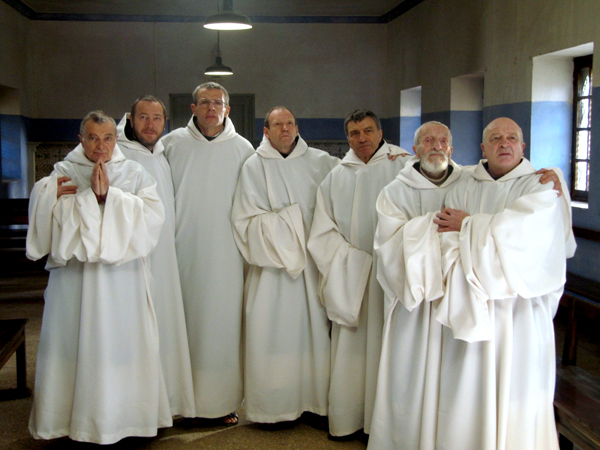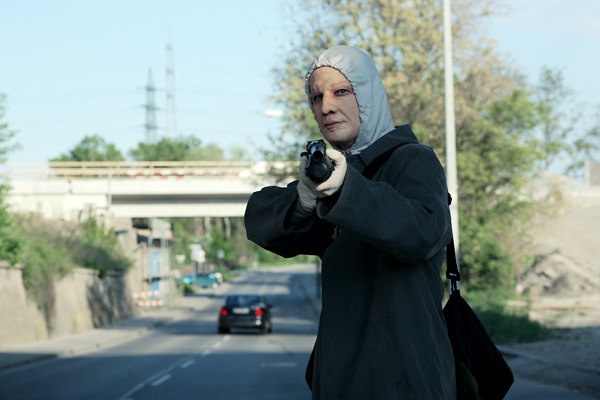|
Reviews of Recent Independent, Foreign, & Documentary Films in Theaters and DVD/Home Video

2010 New York Film Festival Anyone who followed the news coverage of May’s Cannes Film Festival could have accurately predicted a large part of the programming of this year’s New York Film Festival based on the French reception of Carlos, Another Year, Poetry, etc. However, the stateside festival has finally invited two of the best French filmmakers, Abdellatif Kechiche for Black Venus (which just premiered at Venice) and Xavier Beauvois and his meditation of modern-day martyrdom, Of Gods and Men. Neither filmmaker could be described as a discovery, really. The Tunisia-born Kechiche has already won much acclaim for his earlier films, Games of Love and Chance and The Secret of the Grain. Still, it’s a wonder that this is his first festival appearance. As new Executive Director Rose Kuo reiterates in a program note, the festival’s mission is to showcase the year’s most compelling and significant films. Of course, friendships have been won and lost debating what fits those criteria, but broadly speaking, the films covered below have succeeded, in one way or another, but all have flown under distributors’ radars so far, with one exception. (The only selection seen that completely underwhelmed: festival vet Hong Sang-soo’s very dry variation-on-a-theme/film school spoof Oki’s Movie, with Hong’s typically needy man-child and the woman who tolerates him.) Of Gods and Men will definitely be released in the U.S. later this year. It has already won the Grand Prix at Cannes and will represent France for the best foreign-language film Oscar, a trajectory that sharply contrasts with Beauvois’s last film, the little-seen La Petit Lieutenant, a police drama that also understatedly builds to an emotional climax. From the first scene to the last, there’s a uniformity to his new film, or as Sidney Pollack might have said, there’s a spine to the script. If the straightforward tone is too austere for some, it’s more than suitable for the film’s main setting, a mountaintop monastery in Algeria. Eight non-proselytizing Cistercian-Trappist monks remain in the Algerian backwater, doling out health care, sneakers, and advice to the Muslim villagers. They participate and integrate themselves fully in the local community, which sprung up around the monastery, though apparently no locals have converted to Christianity. In the film, which is loosely based on events in the mid-’90s, the first hint of trouble brewing is the news of an 18-year-old local woman stabbed to death for not wearing the hijab. Then the nearby mujahedeen have ordered all foreigners to leave the country. After a nearby group of Croats have had their throats slashed, the Algerian army warns the monks that they are not safe. They refuse military protection as no weapons are allowed within their doors. The contemplative script, without walking on eggshells, methodically spells out all of the arguments for the monks to remain (“The good shepherd doesn’t abandon the flock”) or to flee back to France. With no intrusive musical cues, Beauvois only introduces music towards the end (with one of the most romantic works of the 19th century)—music that releases the welling emotions that have built up during the previous 90 minutes. Through this piece of secular music playing on a boom box, the dam breaks on screen and for the audience. Even during this incredibly moving scene, Beauvois keeps it simple, filming the monks in close-up. Dialogue would have been redundant.
When first seen, Saartje’s wearing a nearly sheer body suit, adorned only with trinkets and a loincloth. She’s tethered in a cage, touted by the master of ceremonies as a wild woman. He holds the rope tied to her neck collar, pulling her back when she, as part of her shtick, lunges at the audience. After he has calmed the grunting woman, rubbing her arm with his whip, he beckons the crowd to touch her buttocks to prove that her body’s real. The overall viewing experience is like a trip to a back alley sideshow. The film constantly questions whether she’s a willing part of her own exploitation. There’s not one answer—she rejects an opportunity to liberate herself during the London trial against her Afrikaner manager on charges of slavery. She takes the stand, defending herself as an artist. The film suggests that that (in a limited way) is true. Whether passive or plastered (booze fortifies/anesthetizes her spirits), she makes small steps towards some sort of autonomy, like singing an impromptu song during her savage beast act—followed by a beating by her manager after the audience has gone home. As one of her exploiters, actor Olivier Gourmet shatters any perception you may have from his collaborations with the Dardenne brothers. Kechiche revels in the debauchery, especially in a gilded French saloon of libertines, where even a marquise straddles the Saartje with a breast popping out of her Empire dress. What follows, after a lot of champagne, is one of the most psychologically brutal scenes in the festival (and that’s saying something). The sordidness takes over the voyeuristic and powerful film. Having gone from semi-riches back to the gutter, Saartje’s downfall proves the harshest lesson of show business outside of Chicago: one moment you’re on top, the next forgotten. Multi-colored strings tied to a bride’s pubic hair; a mist-covered Orthodox church; a post-Soviet ghost town; bleak, autumnal landscape—the crisp, blue-toned cinematography of Silent Souls takes viewers on an ominous road trip of the surreal kind. This is exactly the sort of difficult-to-peg-down film that depends on word of mouth for a life outside of the festival circuit. It’s also an excellent example of the deft use of voice-over, which lends the amorphous film to more than one reading, all at a heaven-sent 75 minutes. The narration points out the peculiarities of the Merjans, descendants of the Finnish population in West-Central Russia. Armchair anthropologists, relax. The director and screenwriter made up this culture, which was absorbed into Russia in the 17th century. The rituals exit in a world all unto themselves, a vanishing realm that exists only on celluloid: absolution with a baptism of vodka, the Pagan-like worship of rivers. With no qualms, paper mill worker and would-be writer, Aist (Igor Sergeyev), agrees to help the factory's director dispose of the body of his wife, committing her to the Volga River. His boss doesn’t want anyone in the morgue to see her body. (How the woman in her late thirties died, well….) They bathe her, comb her hair, wrap her in a blanket, and gently place her in the backseat. After they have hit the road, Aist’s ominously intones that this will be the last time he and his companion will see their dying, one-company town, “We didn’t know it was forever.” Oh, oh. My Joy, a film that has rigidly divided Russian audiences, according to its director, begins with a plop, a tossed corpse landing in wet cement. Even after its bleak life-is-cheap worldview has been relentlessly confirmed in all of its twisted permutations, the film never fails to surprise. Director Sergei Loznitsa takes his time in setting the mood and then sets off well-timed shocks. (The director’s documentary background comes in handy. Time-worn extras in one scene cry out for their own movie.) There have been plenty of Russian films irreverently dissecting the country’s past, but My Joy paints an equally dark picture of the present, where the police at a roadside checkpoint yield immense power and prostitutes pop up anywhere, anytime, which they strangely do in Silent Souls as well. Nothing is sacred, including the veneration of wizened veterans of the Great War. In some ways, My Joy’s about the making of a monster: square-faced, flat-nosed Everyman Georgy (Viktor Nemets), an amiable trucker lost in the hinterlands. When he offers a baby-faced hooker a lift, it’s not for sex but for directions. Really. Everyone he encounters is a little bit nutty or has an agenda and he’s the mark. (Don’t try to solve the meaning of the title; it refers to an episode now resting on the editing room floor.) Though so bleak that you might need meds, My Joy is G-rated compared to the morbidly disturbing Soviet era of Aleksey Balaanov’s Cargo 200 from 2007.
Much in the same way the viewer lived through the adrenaline rush along with Jeremy Renner in The Hurt Locker, the viewer here feels a contact high as Johann efficiently knocks off one bank after another. He trained for his return to crime while incarcerated for a pervious robbery, and even had a treadmill in his cell. On the day he’s released, he breaks into a car and speeds off. If he has made any choice for life after prison at all, it was to live as he had before. It’s all for the rush—he never spends a euro of his loot. At the same time, Heisenberg never softens the character. In explosive moments of violence, Johann’s repellant as much as he’s a thrill-seeker. The film is based on a true story-turned-novel, but the director freely takes dramatic license (the real-life criminal was more brutal), and convinces the audience that Johann, the surprise winner of the Vienna marathon, is also the masked gunman on a citywide crime spree. Ten years ago, this type of film with hip, crossover appeal would have been snapped up. Actor Alfredo Castro reteams with Chilean director Pablo Larrain (Tony Manero) in the unsettling Post Mortem. Castro, giving Robert De Niro a run for his money, has taken the anti-hero to an insidious extreme. A walking piece of wallpaper, Mario is so unassuming that he trespasses unnoticed. But on a closer look, he’s kind of creepy—fiftyish with a frosted blond pageboy haircut and an unflappable countenance. He may not be in the ballpark of Javier Bardem in No Country for Old Men, but he’s not so far off. Blending into the background, he lurks around the backstage area of an emaciated showgirl’s low-rent dressing room. She recognizes him as her neighbor across the street, probably from catching him staring out his window at her comings and goings at all hours. The first
clue we’re in the ’70s? The grainy 16mm film stock. Second, dead bodies
trickle into the morgue where Mario writes up the coroner’s reports. In
no time bloody corpses clog the corridors—we’re in the early days of the
Pinochet regime. Mario becomes a flunky of the Chilean army, turning
into an oblivious Chiron, pulling a cart loaded down with a pyramid of
bodies toward the soon-to-be-forged autopsies. Like in his previous
film, Larrain has his own answer to the question, how can atrocities
happen? Indifference, opportunism, a little of both. What makes Post
Mortem realistically frightening is how the day-to-day killings are
quietly accepted and the people, blasé.
Kent Turner
|



